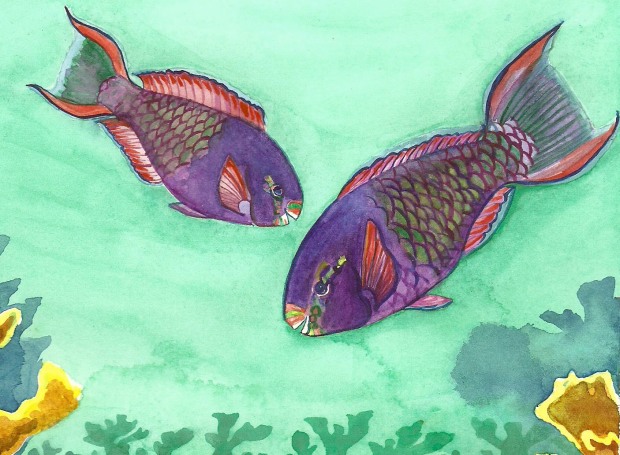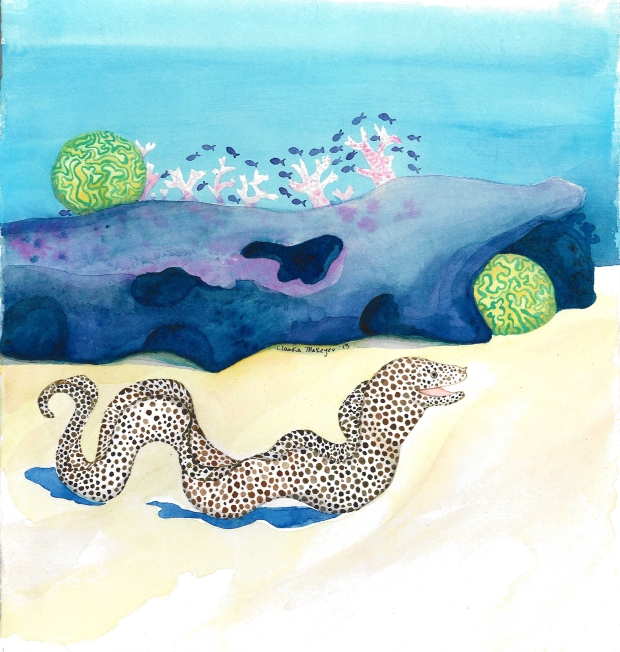
J is for Jellyfish loving Juvenile Jack
Scientific name: Gnathanodon speciosus
Tagalog: Leson & Labong Labong
Juvenile Jacks love Giant Jellyfish.
They have tough skin so the jellyfish tentacles only sting a little bit.
Having jellyfish protection when a big fish wants to eat you is worth a little sting.
This bright yellow jack is also known as Golden Trevally and like most trevally, they get HUGE.
Jacks are truly a « Jack of all trades ». Jacks patrol their reef, but they can also compete in the open ocean or expore sandy shallows or swim around the mangroves.
They are large and in charge predators and even boss around the reef sharks.
At least they are once they grow up, and to do that they have to survive with tricks like swimming with jellyfish.











